Pace Construction Keeps Pace with Innovation
BY AsphaltPro Staff
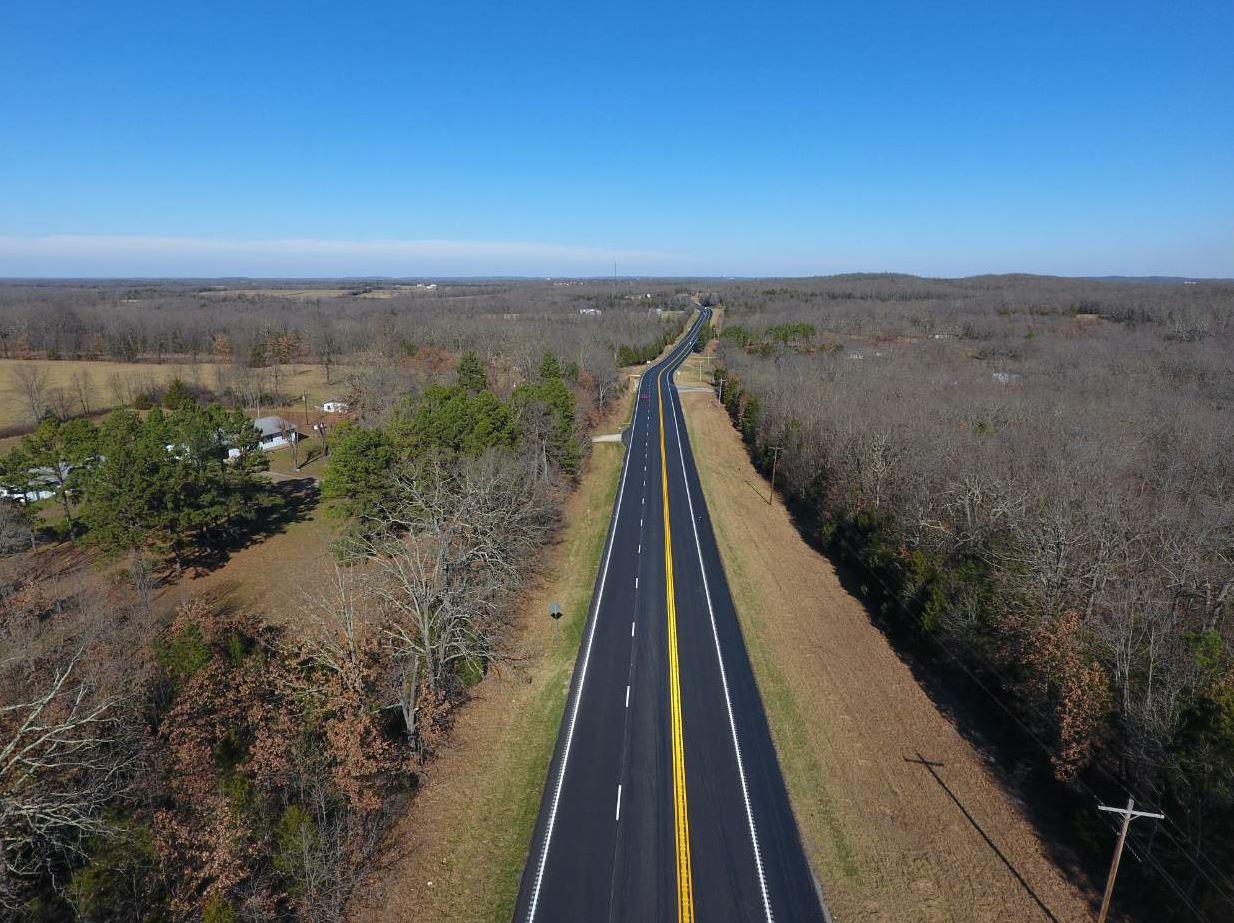
“Life is really simple, but we insist on making it complicated.”—Confucius
There are a great many quotes and proverbs about the value of simplicity, but as Pace Construction, headquartered in St. Louis, Missouri, learned on a recent paving project in the state, simplicity can sometimes be overrated.
In November 2017, they completed a 55,000-ton mill-and-fill project spanning a stretch of 22 miles of Highway 63 just south of Rolla, to just past the border of Phelps and Texas counties.
“The initial scope of the project was pretty straightforward,” said Andy Ernst, vice president of construction operations at Pace. The project called for around 55 lane miles of Superpave 125 C, some guardrail removal and replace, rumble strips, and striping. “We actually took a simple job and turned it into a real challenge for us.”
Instead of performing the job based solely on the specs, Pace presented the Missouri Department of Transportation (MoDOT) with some cost-saving measures and innovative ideas using high-density and low-gyration mixes and new testing methods.
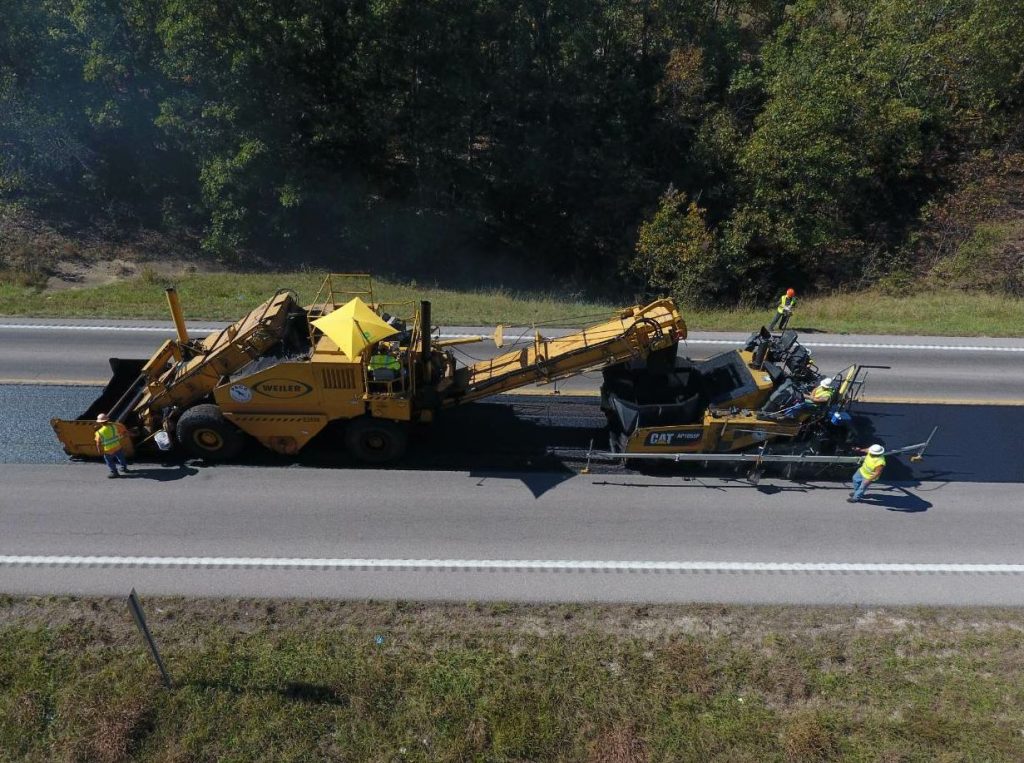
Prior to this project, MoDOT had just received a federal grant to use high density, low air void mix, so Pace proposed to change a part of this project to utilize those federal funds.
“Being on the front edge of innovation gives us a competitive advantage and gets us ahead of the learning curve before everyone else even gets started,” Ernst said. Although they had the low bid on the project, Ernst said Pace’s commitment to innovation was a contributing factor in the company’s approval to use the high density initiative grant.
The added complexity paid off. In addition to receiving a number of bonuses for the job, the project also received a Quality in Construction award from the Missouri Asphalt Pavement Association January 2018, in the Superpave: Over 50,000 Tons category.
When it comes to simplicity, it’s simple to see that saving money and paving a better roadway wins out.
The Value of Value Engineering
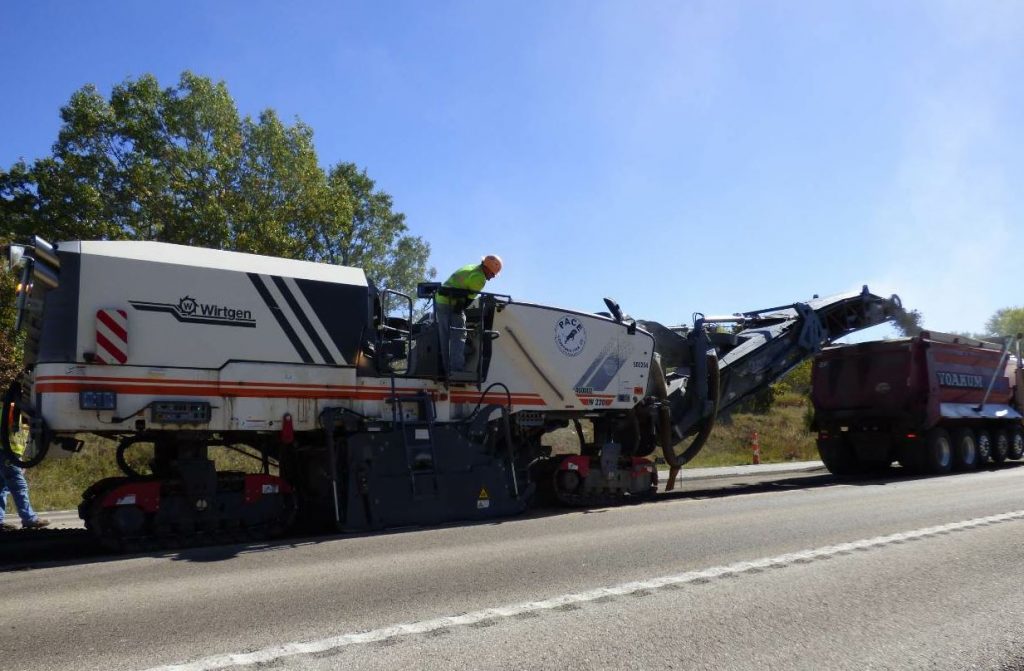
The milling was performed directly ahead of the paving train with two half-lane milling machines from Wirtgen, a W2000 and a W220.
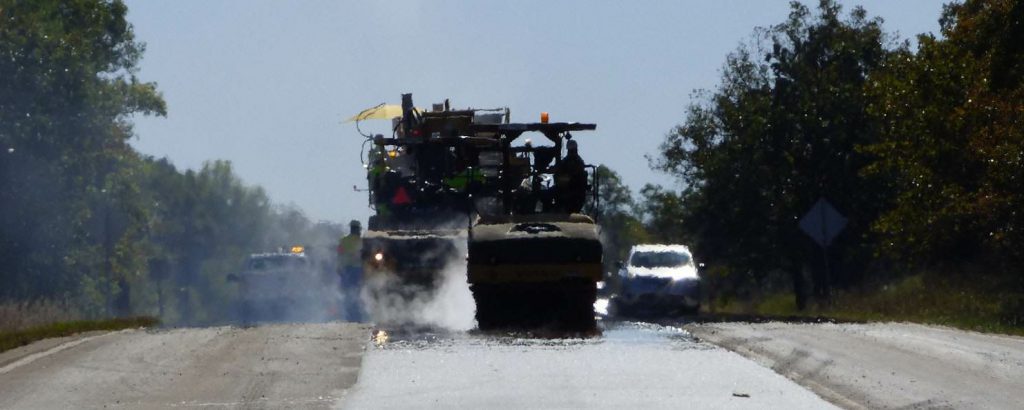
Pace then compacted the mat in two test sections—one of each mix design—using four rollers making five passes each. Then, it added another two rollers for the other two sections.
For the majority of the project, Highway 63 is just two lanes wide, with a shoulder on each side. In about 10 locations throughout the 22-mile project, the highway also has a passing lane.
Although the road is located in a rural setting, it’s a relatively heavily traveled road with commuter traffic and busy weekend traffic as residents of the surrounding areas head into Rolla—the largest town in the area—for work and to run errands.
“The existing surface had reached its life expectancy and had started to fatigue,” Ernst said. The existing pavement was around 15 years old at the time of replacement.
Despite the condition of the travel lanes, the shoulders made it through those years relatively unscathed.
“An interesting twist to the project was that in the original bid, MoDOT wanted to do a full width of new pavement, including the shoulders,” Ernst said. But when Pace estimators drove the job before bidding, they realized that the shoulders were still in good condition. They could be sealed, rather than repaved.
“Not paving those shoulders could save MoDOT some money,” Ernst said. “But we couldn’t have that conversation before we turned in our proposal, so we turned in our proposal as their plans indicated.”
After being awarded the contract, Pace filled out a proposal to use value engineering on the project and brought their suggestions to MoDOT’s engineers.
“MoDOT is a big proponent of what they call value engineering, which basically gives the contractor an opportunity to come up with better ways to take on the project they’ve been awarded,” Ernst said. The idea is to come up with ideas to save money and/or to offer a better, longer-lasting roadway.
Ernst said the contractor can also share in those savings, adding that sometimes the savings might be split 50/50 or other times, 75/25. On this project, Pace would receive 25 percent of the sum their proposals saved the agency.
Another proposal from Pace included paving a portion of the job with a high-density, low air void mix.
“MoDOT had just received a federal grant to use high density, low air void mix, so we proposed to change a part of this project to utilize those federal funds,” Ernst said.
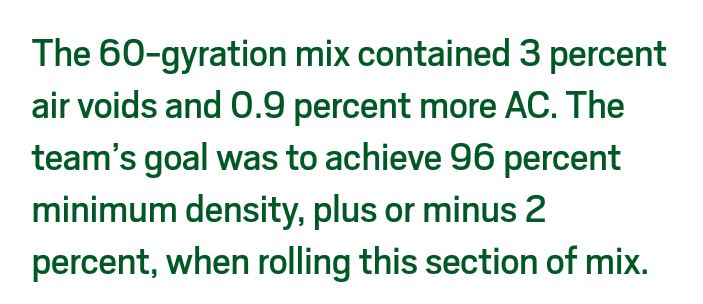
After a number of meetings, Ernst said, MoDOT accepted both proposals: to fog seal the shoulders instead of re-pave them; and to pave a high density, low air void test section.
The changes proposed by Pace ended up saving MoDOT around $600,000 on the initial project cost of $4.023 million. MoDOT was then able to apply those savings toward paving a thicker lift of 2 inches instead of the initially-proposed 1 ¾ inches, for a final project cost of $4.125 million, including bonuses Pace received for smoothness and volumetrics. Additionally, $50,000 of the extra $100,000 price tag came from the federal grant MoDOT received for the high-density test section.
For a marginal amount of money, MoDOT was able to get a better roadway that would “give them a better life expectancy out of the road, moving forward,” Ernst said.
Paving, Piece by Piece
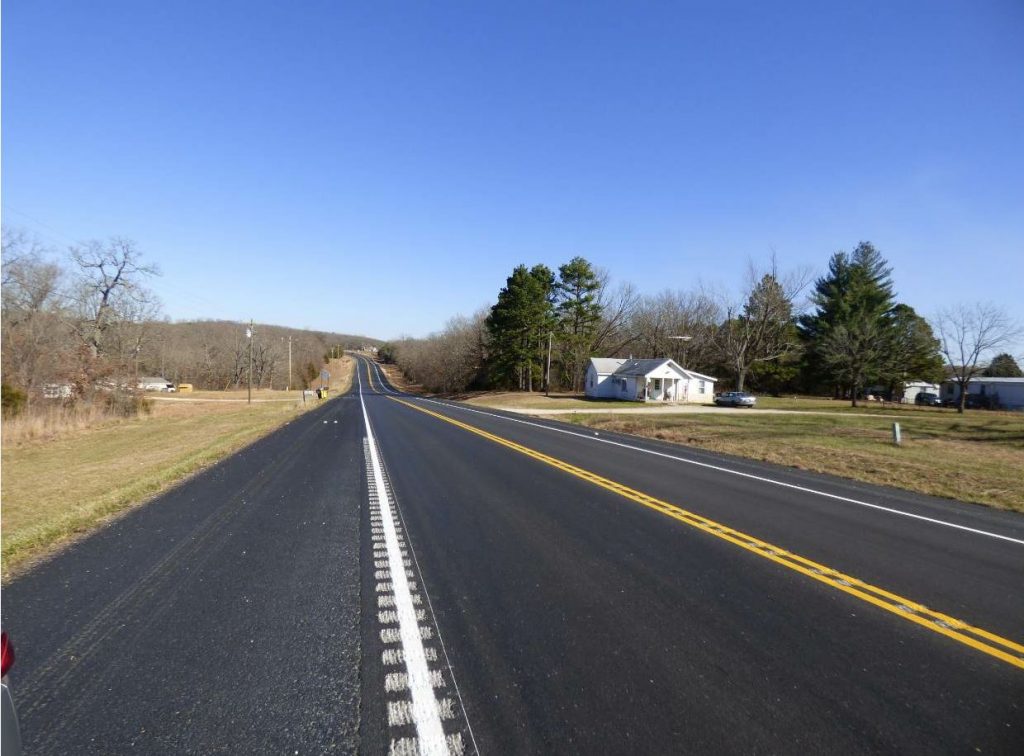
Pace Construction completed the 55,000-ton mill-and-fill project in November 2017.
The project lasted from August to November 2017, with all of the road work being performed during the work day between 7 a.m. and 5 p.m. No paving was performed on the weekends, due to higher traffic volumes.
Weekday traffic wasn’t too difficult to manage, Ernst said, but did get busier as the crew paved closer and closer to the outskirts of Rolla on the north end of the job. The crew maintained one lane of traffic throughout the project, with flaggers controlling motorists on each side of the project, and paved between 2 and 3 miles per day.
The milling was performed directly ahead of the paving train with two half-lane milling machines from Wirtgen, a W2000 and a W220. Ernst said they tried to keep the milling machines about ½ of a mile ahead of the paver, so they’d give the milling team about an hour head start in the mornings.
All of the paving was performed with Pace’s Cat 1055F track paver at widths varying between 12 and 14 feet.
Pace broke the project down into four test sections by asphalt tonnage.
The first 10,000 tons used the mix initially bid for the job—a Superpave 125 C PG70-22 with 4 percent air voids and 80 gyrations. On this section, Pace aimed to achieve 94.5 percent minimum density, plus or minus 2.5 percent, which is what had been specified in the bid, and they used four rollers: one Cat CB54XW, one Volvo DD-118, and two Volvo DD-120s. The rolling pattern was the same as any other job, with a pass count of five with each roller.
“We built it just as we would any other project, according to specifications,” Ernst said.
The second section used 10,000 tons of the same mix, Superpave 125 C, and the same rolling pattern, but added another Volvo DD-118 and a Sakai GW750 vibratory rubber tire roller to achieve a minimum density of 96 percent, plus or minus 2 percent. Each roller made five passes, with three pairs of rollers rolling in echelon.
“With that section, we just wanted to see what we’d have to do to improve minimum density by 2 percent,” Ernst said, “and for the most part, what we tried was successful.”
In the third section, Pace paved 10,000 tons of high-density mix with a goal of once again achieving 96 percent minimum density, plus or minus 2 percent. The 60-gyration mix contained 3 percent air voids and 0.9 percent more AC.
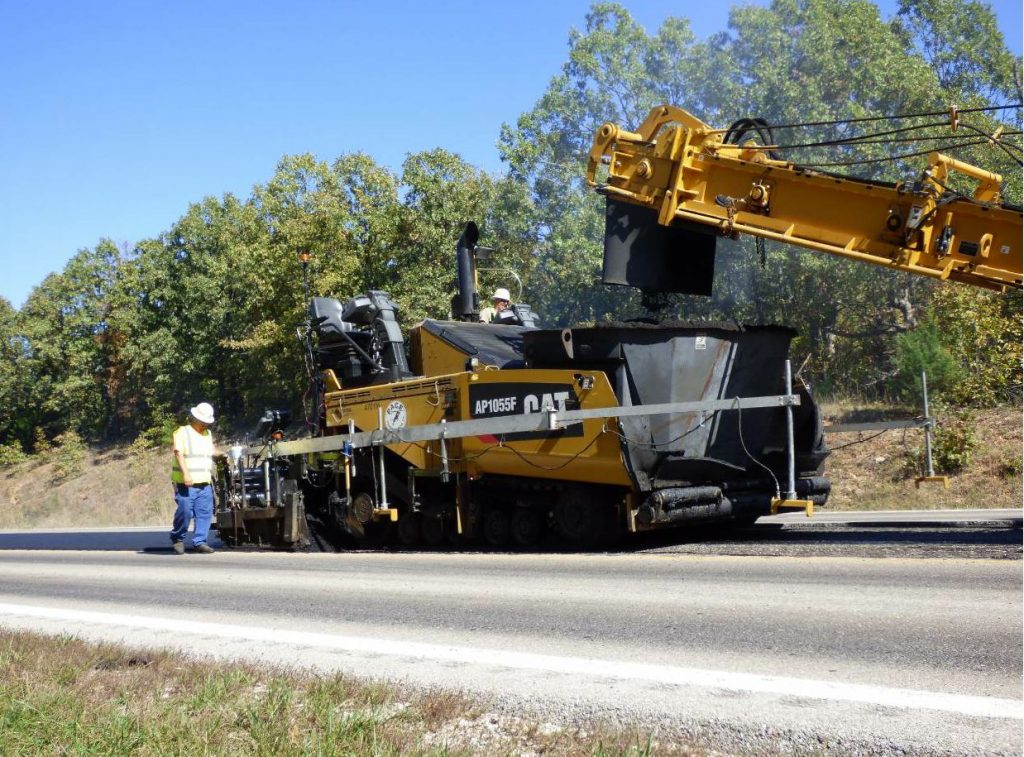
Two of the four test sections were paved with Superpave 125 C PG70-22 AC with 4 percent air voids and 80 gyrations, and the other two sections were paved with a high-density 60-gyration mix containing 3 percent air voids and 0.9 percent more AC.
“That mix is more costly to produce because of the higher AC content, which is obviously the most expensive part of the mix,” Ernst said. That’s where the federal funds came into play.
“At the federal level, the Federal Highway Administration has an initiative to lower in place air voids and increase density,” Ernst said. “MoDot talked to a couple of different contractors about doing this and thought this 63 job was the best candidate, due to the larger size of the project giving them larger test sections of 10,000 tons each.”
On the final section, Pace paved 60-gyration mix with 4 percent air voids with a minimum density goal of 94.5 percent, plus or minus 2.5 percent.
“One of the main reasons we lowered the Ndes gyrations was to meet the increased minimum density requirement,” Andy LaPlante said. LaPlante is the director of operations for Interstate Testing Services, the independent materials testing lab which designed the mix used on this job. “I felt that it was a two-part implementation process. If we increase the minimum density, the mix needs to be designed around that.”
“Lowering the design gyrations would help increase our ability to achieve that higher in-place density,” he added. “By lowering the Ndes gyration it would decrease the chance of degrading the mix during compaction and therefore increase the pavement life.”
On this section, they performed a couple additional tests: the Flexibility Index Test (AASHTO TP 124) and the Hamburg Wheel Tracking Test (AASHTO T 324). MoDOT wanted to test the mix every 10,000 tons, so this final section consisted of 25,000 tons of asphalt.
The Flexibility Index Test determines the fracture potential of asphalt mixes, and the Hamburg Wheel Tracking Test tests the rutting and moisture susceptibility of HMA.
“If you design the mix too stiff, it’ll have low rutting resistance, but it will want to crack,” LaPlante said. “If you design your mix too soft, it will have high cracking resistance but will be susceptible to rutting. That’s why these two tests methods work so well together. You can find a happy medium and balance your mix design by using these tests together.”
Although LaPlante had performed those tests before, this was the first time they’d been incorporated into a project.
“MoDOT wanted to use these two test methods and we were just as excited to use them as MoDOT was,” LaPlante said, adding that MoDOT wanted to perform them as part of a performance field verification. They performed the tests during the mix design process, and collected samples from every 10,000 tons produced for the last section of the Highway 63 project to ensure it met the specifications developed for the job.
And meeting—or exceeding—the specifications is exactly what Pace did.
Pace received a $92,000 bonus for smoothness, $45,000 for moisture sensitivity testing, and $68,000 on its percent-within-limits pay factors, including density, air voids, AC content and voids in mineral aggregate (VMA). They also achieved their minimum density goals in each section.
As if those bonuses and a Quality in Construction Award from MAPA wasn’t enough, Pace is also talking about doing a similar job for MoDOT in 2018 on Route 60 in the city of Mountain View, in Howell County.
It turns out, being open to new challenges, despite complications and complexity, can really pay off. As Douglas Horton once said, “The art of simplicity is a puzzle of complexity.”
